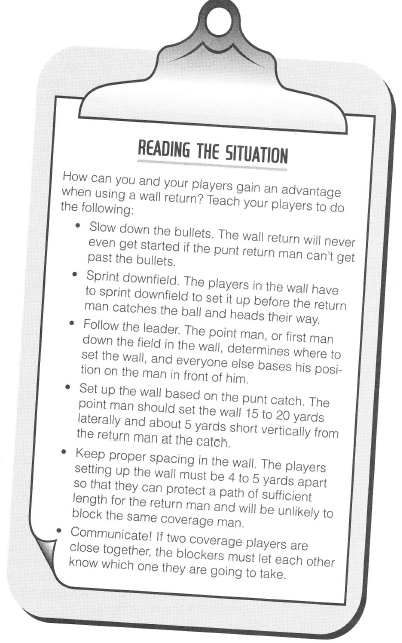|
Wall Punt Return by American Sport Education Program A wall return is a punt return in which some of the players on the return unit peel off while the ball is in the air and position themselves a few yards apart near one sideline. Facing inside, they create a wall of blockers between the coverage players and the sideline. If the return man can catch the punt and get to the wall, he should have a clear path to the end zone. The challenge for the players executing a wall return is that they don't have a particular opponent to block; they simply establish their positions and
ACQUIRING THE APPROPRIATE KNOWLEDGE Rules
Physical Playing Conditions
Strengths and Weaknesses of Opponents
Self-Knowledge
Decision-Making Guidelines
|
|
|



 then block any opponent who comes into their area. The wall return also requires a punt that stays in the air long enough for the return team to set up the wall. Finally, the wall return requires a good punt return man–one who catches the ball well and has enough speed to get to the wall. Although the wall return is a difficult tactical skill in the realm of special teams, practicing it may be worth the effort because it can be an exciting, game-changing play.
then block any opponent who comes into their area. The wall return also requires a punt that stays in the air long enough for the return team to set up the wall. Finally, the wall return requires a good punt return man–one who catches the ball well and has enough speed to get to the wall. Although the wall return is a difficult tactical skill in the realm of special teams, practicing it may be worth the effort because it can be an exciting, game-changing play. 


